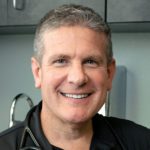Prescription Stimulant Abuse Statistics
Misuse of stimulants like Adderall® is a rising trend, particularly among young adults. Statistics reveal the prevalence of this abuse and its associated health risks.
Battling addiction & ready for help?
About 5 million people (2.1% of adults) in the U.S. misuse prescription stimulants. These stimulants are only intended to be used by doctor’s instruction to treat ADHD (attention deficit hyperactivity disorder), narcolepsy, and occasionally depression.
Prescription stimulants usually come in pill or tablet form. When abused, these drugs are consumed orally or by crushing and then injecting or snorting. Recreational use of prescription stimulants is potentially habit-forming and also dangerous.
Prescription stimulants include:
- dextroamphetamine (Dexedrine®)
- dextroamphetamine/amphetamine combination product (Adderall®)
- methylphenidate (Ritalin®, Concerta®)
An estimated 0.2% (or 0.4 million) of American adults have prescription stimulant use disorders. Having a substance use disorder means that these people have developed a habit strong enough to become addicted.
The Dangers of Prescription Stimulant Abuse
Many people mistake prescription stimulants as safe to use recreationally. Prescription stimulants are only safe to use as directed by a healthcare provider such as a doctor or pharmacist. Prescription drugs can have many of the same negative effects as illegal drugs if they are taken improperly.
The National Institute on Drug Abuse (NIDA) reports that misuse of prescription stimulants can result in dangerous side effects such as:
- Raised body temperature
- Raised blood pressure
- Irregular or increased heart rate
- Seizures
- Cardiovascular events (including heart failure)
- Addiction
- Psychosis
- Death
There is also evidence that prescription drug misuse is associated with higher rates of cigarette smoking, heavy drinking, and illicit drug use (such as marijuana and cocaine) in young people. All of these correlating habits can be harmful to a person’s health.
How Prescription Stimulant Misuse Affects Young People
Prescription stimulant misuse is a major problem among teenagers, young adults, and college students. Young people are most prone to misuse ADHD medications or prescription stimulants because users claim these “study drugs” help enhance their academic performance. In reality, there is no evidence that stimulants can help increase grades for students who don’t have ADHD.
During adolescence, the prefrontal cortex of the brain is still developing. The Substance Abuse and Mental Health Services Administration (SAMHSA) warns that misusing prescription stimulants, antidepressants, sedatives, or other drugs during adolescence can negatively impact the development of the brain and body.
When surveyed about their prescription stimulant abuse, 78.2% of respondents reported that their motivation for taking prescription stimulants illicitly was to concentrate, stay alert, or study.
Key statistics about prescription stimulant misuse among adolescents:
- In 2011, 1.1 million Americans aged 12 or older used prescription stimulants nonmedically in the past year.
- In 2020, 4.4 percent of high school seniors surveyed reported past-year nonmedical use of Adderall, up from .5 percent in 2019.
- Also, in 2020, 1.7% reported past-year nonmedical use of Ritalin, up by .6% from 2019.
- In 2017, 60% of youth who reported abusing stimulants said they either bought or received prescription stimulants from a friend or relative.
Additional studies indicate that there is presently no correlation between emergency room visits for prescription stimulants and trends in prescriptions themselves.
Many young people mistake prescription drug use as safe, making them a popular recreational choice. While stimulants make up only a portion of the prescription drugs misused, it is important to note the ongoing prescription misuse problem among teens and young adults.
Key statistics for prescription (stimulant and other) drug misuse in young people:
- Young adults ages 18 to 25 are most likely to misuse prescription drugs, with 14.4% reporting nonmedical use in the past year.
- 4.9% of youth ages 12 to 17 reported nonmedical use of prescription medications in the past year.
- Prescription drugs are the 4th most common drugs used by 12th graders, only being topped by alcohol, marijuana, and tobacco. This includes prescription opioids, benzodiazepines (Xanax), and tranquilizers (Valium).
Prescription Stimulant Statistics by Race
Among college students of all racial groups, prescription drug abuse (stimulant and other) was second only to marijuana use. Hispanic and White students were more likely to report that they had used drugs before coming to college than Asian and African American students.
The following is a breakdown of prescription stimulant misuse in college students by race:
- Asian – men 3.8%, women 3.0%
- African American – men 4.9%, women 0.7%
- Hispanic – men 9%, women 8%
- White – men 7.6%, women 6.6%
- Other races – men 4.7%, women 2.0%
Prescription Stimulant Statistics in Women vs. Men
The rate of stimulant use between men and women is similar. However, there is data to suggest that women are more likely to use and abuse prescription stimulants for weight loss and energy. Women also tend to progress from first exposure to addiction faster than men.
In 2019, an estimated 5.2% of women in the U.S. misused prescription stimulants.
Prescription stimulant misuse among women has gone down over the last few years. In 2016, an estimated 1.2 million women in the U.S. were misusing prescription stimulants, but by 2019, that estimate was down to 883 thousand.
There is very little data about prescription stimulant misuse in pregnant women. There is, however, data to suggest a slightly higher risk of pregnancy complications in women who take prescription stimulants as directed by their doctor. Non-medical use of these drugs could be dangerous for pregnant women as well as fetuses and babies.
Prescription Stimulant Statistics in the LGBTQ+ Community
LGBTQ+ people are more likely to misuse drugs, including prescription stimulants, most likely due to minority stress. The LGBTQ+ community is more likely to experience various types of trauma and discrimination due to their sexual identity.
The results of one study showed higher percentages of lesbian, gay, and bisexual people misusing prescription stimulants than their straight counterparts.
Here are the percentages of non-medical prescription use by sexual identification:
- Gay men – 5.4%
- Bisexual men – 6.6%
- Heterosexual men – 2.4%
- Lesbian women – 3.3%
- Bisexual women – 6.8%
- Heterosexual women – 1.6%
A possible explanation for the higher rates of misuse among bisexuals is their experience with “double discrimination” from heterosexuals as well as the lesbian and gay communities.
Treatment Types and How to Get Help
Addiction to Adderall, Concerta, and other prescription stimulants is treated using behavioral therapies. These therapies are similar to those for cocaine, methamphetamine, and other illicit stimulants.
One study showed that 1.29% of adults evaluated for substance abuse treatment had misused prescription stimulants in the last 30 days.
There are not currently any FDA-approved drugs for treating stimulant addiction. The first step in treating prescription stimulant addiction is tapering the patient off the drug. Then, patients go through detoxification.
Fortunately, there are plenty of programs and facilities that can help treat prescription stimulant use disorders. Help is available to anyone who is struggling with addiction.
Get Treatment Help Now
If you or someone you love is struggling with addiction, getting help is just a phone call away, or consider trying therapy online with BetterHelp.
Exclusive offer: 20% Off BetterHelp*Following links to the BetterHelp website may earn us a commission that helps us manage and maintain AddictionHelp.com
*Get 20% off your first month of BetterHelp.


